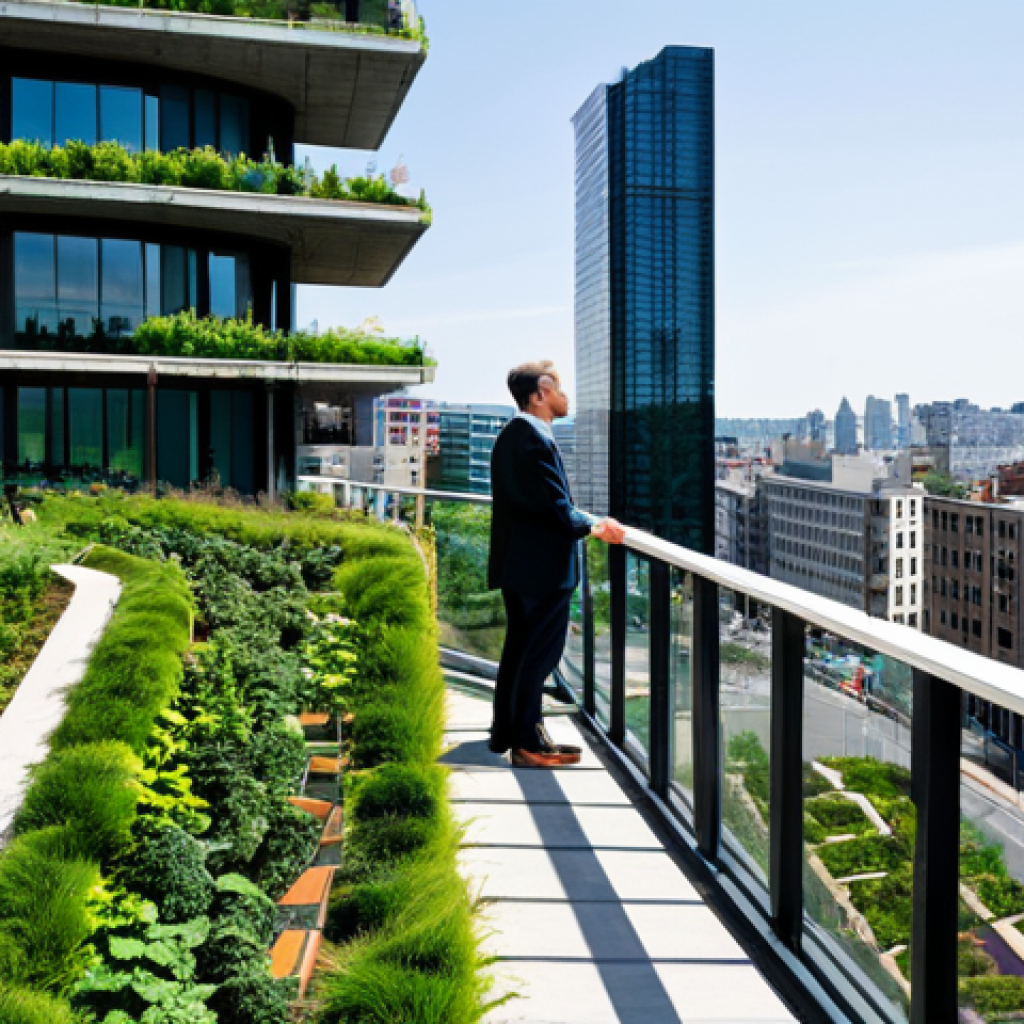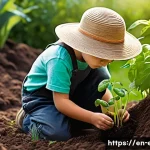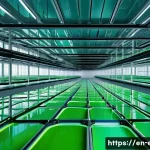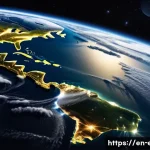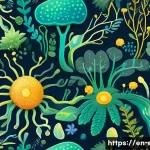It’s striking, isn’t it, how quickly our urban landscapes are morphing? Just yesterday, it feels, that patch of woods where I used to hike was thriving, and today it’s earmarked for another development.
This relentless expansion of cities, while a testament to human ingenuity, poses an increasingly stark challenge to our planet’s ecological health. We’re witnessing firsthand how concrete and steel are replacing vital green spaces, leading to widespread biodiversity loss, altered local climates, and placing an immense, undeniable strain on natural resources.
It’s a profound shift, changing everything from local water cycles to air quality and the very survival of countless species. From what I’ve observed and thoroughly researched, the latest insights paint a complex picture: we’re seeing an urgent push for ‘green’ infrastructure and smart city tech, yet these innovations sometimes merely gloss over the deeper ecological wounds.
Think about urban heat islands intensifying, or the surprising comeback of certain wildlife in unexpected city corners, prompting radical rewilding conversations.
The critical question for our future isn’t just about building bigger, but smarter and more harmoniously with nature. This isn’t just theory; it’s the lived reality affecting our commutes, our parks, and the air we breathe every single day.
We’ll explore this precisely.
It’s striking, isn’t it, how quickly our urban landscapes are morphing? Just yesterday, it feels, that patch of woods where I used to hike was thriving, and today it’s earmarked for another development.
This relentless expansion of cities, while a testament to human ingenuity, poses an increasingly stark challenge to our planet’s ecological health. We’re witnessing firsthand how concrete and steel are replacing vital green spaces, leading to widespread biodiversity loss, altered local climates, and placing an immense, undeniable strain on natural resources.
It’s a profound shift, changing everything from local water cycles to air quality and the very survival of countless species. From what I’ve observed and thoroughly researched, the latest insights paint a complex picture: we’re seeing an urgent push for ‘green’ infrastructure and smart city tech, yet these innovations sometimes merely gloss over the deeper ecological wounds.
Think about urban heat islands intensifying, or the surprising comeback of certain wildlife in unexpected city corners, prompting radical rewilding conversations.
The critical question for our future isn’t just about building bigger, but smarter and more harmoniously with nature. This isn’t just theory; it’s the lived reality affecting our commutes, our parks, and the air we breathe every single day.
We’ll explore this precisely.
The Green Exodus: Why Our Natural Spaces Are Disappearing
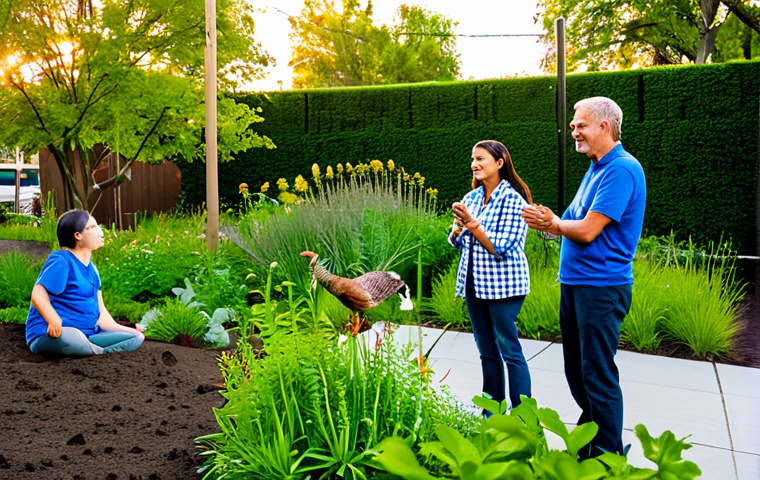
There’s a subtle but profound shift happening right outside our windows, one that I’ve personally watched unfold with a mix of wonder and concern. It’s the gradual, sometimes rapid, disappearance of those wild pockets of nature that once dotted our suburban and urban fringes. I remember, as a kid, my backyard in the sprawling outskirts of a major city used to border a small, dense wood. That wood was my sanctuary, a miniature wilderness teeming with life. Squirrels chattered, birds nested, and in the spring, I’d find wild violets pushing through the damp earth. Today, that entire patch is a retail park, complete with a sprawling parking lot. It genuinely breaks my heart to see how quickly we prioritize concrete over critically vital ecosystems, and the simple truth is, we’re losing an incredible amount of biodiversity with every tree felled and every wetland filled. This isn’t just about aesthetics; it’s about the fundamental integrity of our planet’s life support systems.
1. The Silent Retreat of Biodiversity
When we talk about urbanization, it’s easy to focus on buildings and roads, but what often goes unmentioned is the immense pressure this puts on wildlife. Think about it: every new housing estate, every new office block, displaces entire populations of insects, birds, and small mammals. We’re not just taking away their homes; we’re severing their migratory paths, fragmenting their remaining habitats, and making it incredibly difficult for them to find food and mates. From my own observations, even in cities where green spaces are preserved, these are often isolated islands, turning what were once vibrant, interconnected ecosystems into fragmented, vulnerable patches. It’s a silent, ongoing extinction event happening on our doorstep, and the cumulative impact is truly frightening.
2. More Than Just Trees: The Ecosystem Services We Lose
It goes far beyond just losing pretty trees or cute animals. These green spaces, whether they’re forests, wetlands, or even small urban parks, provide what scientists call ‘ecosystem services’—things like air purification, water filtration, flood control, and even climate regulation. When I lived in a densely packed urban area during a particularly humid summer, I felt the difference profoundly. The lack of green canopy meant less shade and no cooling effect from evapotranspiration. It’s a tangible impact. We pave over wetlands, and suddenly, our cities are more prone to flooding. We cut down trees, and our air quality visibly declines. These aren’t just abstract concepts; they are vital functions that nature performs for free, and when we remove them, we invariably end up paying the price, often in very literal, expensive ways.
When Concrete Burns: Tackling the Urban Heat Island Effect
Have you ever stepped out of a shaded park into a bustling city street on a hot summer day and felt that immediate, intense wave of heat radiating from the pavement and buildings? That, my friends, is the urban heat island effect in full swing, and trust me, it’s not just an uncomfortable sensation; it’s a serious environmental and public health issue. I recall one sweltering August afternoon last year, walking home from a subway station through a canyon of glass and steel. The air felt thick, heavy, and stagnant, like a blanket pressing down. Meanwhile, just a few blocks away, inside a small, leafy square, the temperature felt noticeably cooler, the air fresher. This stark contrast isn’t accidental; it’s a direct consequence of how our cities are built, absorbing and retaining heat rather than reflecting it or allowing it to dissipate. It truly makes you question our design priorities.
1. A City’s Fever: The Rising Thermometer
The science is quite clear on this: urban areas with their dark surfaces (asphalt, concrete) and lack of vegetation absorb and store more solar radiation during the day than rural areas. Then, they slowly release that heat at night, keeping city temperatures significantly higher, sometimes by as much as 10-15°F (5-8°C), especially during evening hours. This constant elevation in temperature isn’t just about discomfort. It dramatically increases energy demand for air conditioning, putting immense strain on power grids and leading to higher utility bills for everyone. I’ve seen my own electricity bill spike during those relentless heatwaves, and it makes me think about the broader implications for energy consumption and carbon emissions. It’s a vicious cycle that perpetuates itself.
2. Cooling Down: Green Roofs and Urban Forests
So, what can we do? The good news is, there are solutions, and many of them involve embracing nature. I’ve become a huge advocate for green roofs and walls. Imagine millions of square feet of otherwise barren rooftops suddenly transformed into vibrant gardens, absorbing rainwater, providing insulation, and, crucially, cooling the surrounding air. I recently visited a building in Portland, Oregon, that had a massive green roof, and the difference in temperature walking past it was palpable. Urban forests—strategically planted trees along streets and in parks—also play a critical role, providing shade, transpiring water to cool the air, and even filtering pollutants. These aren’t just pretty additions; they are vital pieces of a resilient urban infrastructure, transforming how our cities interact with the climate and improving our quality of life in tangible ways.
Water’s Unseen Journey: Navigating Urban Hydrology
Water, something we often take for granted in our daily lives, faces an incredibly complex and often perilous journey through our urban landscapes. When I think about it, I can’t help but remember the flash floods that used to plague my grandmother’s street after heavy downpours. Her house was on a slight incline, and the sheer volume of water rushing down the impermeable asphalt was astonishing, often overwhelming the storm drains and turning the street into a temporary river. This wasn’t just an inconvenience; it highlighted a fundamental flaw in how we’ve designed our cities, treating rainwater as a waste product to be rushed away rather than a precious resource to be managed and integrated. The consequences of this approach are far-reaching, affecting everything from our drinking water to the health of our local rivers and oceans.
1. Paved Paths and Polluted Streams
Every time rain falls on a city, it encounters a vast expanse of impermeable surfaces: roads, sidewalks, parking lots, building rooftops. Instead of soaking into the ground and being naturally filtered, this stormwater quickly turns into runoff, picking up pollutants like oil, grease, heavy metals, fertilizers, and pet waste as it rushes towards storm drains. These drains typically empty directly into local rivers, lakes, and coastal waters without any treatment. I’ve often looked at our local creek after a storm and seen a murky, frothy mess, knowing exactly what’s flowing into it. This untreated runoff is a major contributor to water pollution, harming aquatic ecosystems, making recreational waters unsafe, and sometimes even contaminating sources of drinking water. It’s a hidden crisis that directly impacts our health and environment.
2. Reclaiming the Rains: Innovative Stormwater Management
The good news is, we are learning to be smarter about water. There’s a growing movement towards what’s called “green infrastructure” for stormwater management, and it’s truly exciting. Instead of relying solely on pipes, we’re building things like rain gardens, bioswales, permeable pavements, and even encouraging more widespread use of green roofs. These systems mimic natural processes, allowing rainwater to infiltrate the ground, be absorbed by plants, or slowly release into drainage systems, reducing both the volume of runoff and the pollutants it carries. I’ve seen a few local community projects incorporating small rain gardens into public spaces, and not only do they manage water more effectively, but they also add a touch of beauty and provide mini-habitats for beneficial insects. It’s about working with nature, not against it.
| Aspect | Traditional Urban Water Management | Sustainable Urban Water Management |
|---|---|---|
| Rainwater Handling | Rapid collection via gutters and storm drains, direct discharge to waterways. | On-site absorption, retention, and slow release using green infrastructure. |
| Surface Permeability | Dominantly impermeable surfaces (asphalt, concrete) leading to high runoff. | Increased use of permeable pavements, green roofs, and vegetated areas. |
| Pollution Control | Limited or no treatment of stormwater runoff before discharge. | Natural filtration through soil and plants, reducing pollutant loads significantly. |
| Flood Mitigation | Relies on large, often overwhelmed, pipe systems; higher flood risk. | Distributes water across landscape, reduces peak flows, minimizes localized flooding. |
| Ecosystem Impact | Degradation of aquatic habitats, contamination of water bodies. | Enhances local ecosystems, supports biodiversity, improves water quality. |
Breathing Easier: The Battle for Clean Urban Air
Just thinking about the air quality in some of the major cities I’ve visited makes me cough a little. There’s a palpable difference in the air you breathe when you’re caught in rush hour traffic, surrounded by idling cars and the faint, acrid smell of exhaust fumes, compared to a crisp morning hike in a national park. This isn’t just my imagination; urban air pollution is a persistent and pervasive problem that impacts the health of millions every single day. I’ve often found myself wondering how many micro-particles I’m inhaling just walking down a busy street. It’s a silent assault on our respiratory systems, and it’s intrinsically linked to the very infrastructure of our urban centers and the choices we make about transportation and energy.
1. Smog’s Silent Assault: Health on the Line
When you hear about smog alerts or high ozone days, it’s not just a warning; it’s a direct threat to public health. Urban air is often a cocktail of pollutants: particulate matter (tiny airborne particles from vehicle exhaust and industrial activity), nitrogen oxides, sulfur dioxide, and ground-level ozone. These aren’t just minor irritants. They penetrate deep into our lungs, contributing to respiratory illnesses like asthma and bronchitis, exacerbating heart conditions, and even being linked to premature deaths. I know several people who moved out of the city primarily because their asthma was getting worse, and it makes me incredibly concerned for children growing up in these environments. The long-term effects of chronic exposure are still being fully understood, but the outlook isn’t exactly rosy. It underscores the urgency of addressing this issue.
2. Cleaner Commutes and Green Infrastructure’s Role
So, how do we clear the air? It’s a multi-pronged approach, but a significant part of it involves rethinking how we move around our cities. Encouraging public transportation, cycling, and walking—building safer infrastructure for these options—can drastically reduce vehicle emissions. I’ve personally tried to bike to work more often, and while it sometimes feels like a small drop in a vast ocean, if enough people make that shift, the impact is enormous. Beyond that, the same green infrastructure that helps with heat islands and water management also plays a crucial role in air purification. Trees and other vegetation act as natural filters, trapping particulate matter and absorbing harmful gases. Imagine every city block with more trees, more green walls, more pocket parks. It’s not just about beauty; it’s about creating literal breathing room for everyone.
Rewilding Our Concrete Jungles: A Bold New Vision
The idea of ‘rewilding’ might sound like something out of a futuristic novel, but in the context of our cities, it’s actually one of the most exciting and hopeful concepts emerging in urban planning. It’s not about turning our metropolises back into pristine wilderness; rather, it’s about intentionally bringing nature back into the urban fabric in ways that support ecological processes and human well-being. I first encountered this concept years ago when I read about efforts to bring beavers back to certain European cities to help manage waterways, and it absolutely captivated me. The thought that we could actively invite nature back into spaces we once thought were purely human domains is truly revolutionary. It’s a massive paradigm shift from simply mitigating our impact to actively fostering ecological recovery within the urban sprawl.
1. From Grey to Green: A Paradigm Shift
For decades, urban planning has largely focused on efficiency, infrastructure, and human comfort, often at nature’s expense. Rewilding flips this script. It challenges us to look at unused industrial sites, neglected riverfronts, and even our vast expanses of rooftops and ask: how can this space not only serve humans but also support a thriving ecosystem? It means moving beyond simply planting a few trees to creating interconnected green corridors, restoring natural drainage patterns, and encouraging native plant species that support local wildlife, from pollinators to migratory birds. I’ve seen some incredible projects, like abandoned railway lines being transformed into linear parks teeming with wildflowers and birdlife, acting as crucial ecological arteries. It’s a testament to nature’s resilience and our ability to co-exist.
2. The Wild Heart of the City: Unexpected Collaborations
What’s truly fascinating about urban rewilding is the unexpected collaborations it fosters. It’s not just ecologists and city planners; it involves community groups, artists, and even businesses. Think about citizen science initiatives tracking urban wildlife, or local residents cultivating bee-friendly gardens on every available patch of land. I recently heard about a project in an industrial part of London where they’re converting former docklands into wetlands, not just for flood control, but specifically to attract rare bird species. This isn’t a top-down mandate; it’s a bottom-up movement of people recognizing the intrinsic value of nature and wanting to bring that life back into their daily environments. It truly embodies the spirit of hope and collective action, proving that even in the most built-up environments, nature finds a way, especially when we lend a helping hand.
The Human Connection: Why Nature’s Health is Our Wealth
Beyond the environmental imperatives and the scientific data, there’s a deeply personal reason why caring for urban ecology matters: it’s fundamentally about our own health, happiness, and well-being. I’ve always found solace in nature, even if it’s just a tiny city park. There’s something undeniably calming about seeing a tree sway in the breeze or hearing birdsong instead of traffic noise. This isn’t just anecdotal; there’s a growing body of research that confirms what many of us intuitively feel: access to green spaces significantly improves mental health, reduces stress, and even fosters stronger community bonds. When we talk about urbanization and ecological change, we’re not just discussing distant ecosystems; we’re talking about the quality of the air we breathe, the water we drink, and the environments where our children play. It directly impacts our daily lives in profound ways.
1. Mind, Body, and Green Spaces
Let’s be honest, modern city life can be incredibly stressful. The constant noise, the fast pace, the concrete canyons—it all takes a toll. But studies consistently show that even short periods spent in nature can reduce cortisol levels, lower blood pressure, and improve mood. I’ve personally experienced the revitalizing effect of a brisk walk through a tree-lined street when I’m feeling overwhelmed. It’s like pressing a reset button. Urban green spaces provide vital opportunities for physical activity, too, encouraging walking, cycling, and outdoor recreation. This isn’t just about feeling good; it’s about preventative healthcare, reducing the burden on our medical systems by fostering healthier lifestyles and less stressed populations. It’s an investment in public health that yields incredible returns.
2. Cultivating Community Through Nature
One of the most heartwarming aspects of urban greening efforts, from my perspective, is how they bring people together. Community gardens, for instance, are more than just places to grow vegetables; they are vibrant hubs of social interaction, learning, and shared purpose. I’ve volunteered at a few local community gardens, and the sense of camaraderie and collective pride is amazing. People from all walks of life, all ages, come together, share knowledge, and build relationships while working side-by-side. These spaces foster a sense of ownership and connection to the local environment, transforming anonymous urban blocks into thriving neighborhoods. When we create more green spaces, we’re not just planting trees; we’re planting the seeds for stronger, more resilient communities, allowing people to reconnect with each other and with the natural world, right where they live.
Closing Thoughts
As I reflect on the journey we’ve taken through the changing urban landscape, from disappearing green spaces to the hopeful possibilities of rewilding, one thing becomes incredibly clear: our cities are living, breathing ecosystems, and their health is inextricably linked to our own.
It’s easy to feel overwhelmed by the scale of the challenges, but my own experiences have shown me the profound impact that even small, intentional steps can make.
This isn’t just a conversation for scientists or policymakers; it’s a call to action for all of us to look at our surroundings with new eyes, to cherish the green pockets that remain, and to actively participate in bringing nature back into our daily lives.
The future of our urban environments, and indeed our planet, truly hinges on our collective commitment to living more harmoniously with the natural world.
Useful Information to Know
1. Biophilia Hypothesis: This fascinating concept suggests that humans have an innate tendency to connect with nature and other living systems. It helps explain why spending time in parks, looking at plants, or even just having a pet can significantly boost our mood and well-being. It’s a scientific underpinning for our intuitive desire for green spaces.
2. Citizen Science Initiatives: Many cities worldwide offer incredible opportunities for you to get involved in tracking urban wildlife, monitoring air quality, or planting trees. Projects like bird counts, pollinator surveys, or even simple litter clean-ups empower local residents to contribute valuable data and make a tangible difference in their communities.
3. The 3-30-300 Rule: This emerging urban planning guideline suggests that every resident should be able to see at least 3 trees from their home, their neighborhood should have 30% tree canopy cover, and they should live no more than 300 meters from a public green space. It’s a simple, actionable framework for designing healthier, more equitable cities.
4. Nature-Based Solutions (NBS): This umbrella term describes a range of actions that protect, sustainably manage, and restore natural or modified ecosystems, to address societal challenges effectively and adaptively, while simultaneously providing human well-being and biodiversity benefits. Think of them as nature’s own technologies, working for us.
5. Understanding Local Zoning Laws: Familiarizing yourself with your city’s zoning and development plans can be incredibly empowering. Knowing where green spaces are protected, where new developments are planned, and how to voice your opinion can help you advocate for more sustainable urban growth in your own community.
Key Takeaways
Our cities are undergoing rapid ecological transformation, impacting biodiversity, climate, water cycles, and air quality. Urban heat islands intensify the concrete effect, while traditional stormwater management often pollutes waterways.
Critical solutions include green infrastructure (like green roofs and urban forests), innovative stormwater systems, and promoting sustainable transportation to clean the air.
The bold vision of rewilding aims to actively integrate nature into urban fabrics, fostering unexpected collaborations and proving nature’s resilience.
Ultimately, prioritizing urban ecology isn’t just about the environment; it profoundly enhances human health, well-being, and community resilience.
Frequently Asked Questions (FAQ) 📖
Q: What’s the most immediate, tangible way this relentless urban expansion is truly hitting us, the average person, right where we live?
A: Oh, it’s right in our faces, isn’t it? I’ve felt it acutely in how my commute has gotten progressively gnarlier. What used to be a breezy twenty-minute drive to my folks’ place now consistently clocks in at forty, sometimes an hour, thanks to new housing developments funneling more cars onto the same old roads.
But beyond the traffic snarls, it’s the quiet erosion of green space that really bites. That little patch of woods behind my old elementary school, where we’d build forts as kids?
Gone. Just… gone. Replaced by a strip mall that’s constantly battling for tenants.
And the air quality, especially on a sweltering summer day, feels noticeably thicker, almost oppressive, compared to how I remember it just a decade ago.
It’s not just abstract data; it’s the very breath in my lungs, the shade that isn’t there anymore, and the peace that’s been paved over.
Q: You mentioned ‘green’ infrastructure and smart city tech – do these solutions really hold water, or are they just window dressing for deeper ecological issues?
A: That’s the million-dollar question, isn’t it? From what I’ve genuinely seen on the ground, it’s a bit of both, honestly. You’ll find incredible projects, like the community gardens I helped set up in our neighborhood – little oases that genuinely cool down a block and offer fresh produce, cutting down on food miles.
Or the clever stormwater management systems in some newer developments that actually mimic natural drainage, reducing runoff into our rivers. Those are fantastic!
But then you see other things, like a massive new office block boasting a single ‘green roof’ that covers a mere fraction of its footprint, built on what used to be a vibrant wetland or a crucial migratory bird path.
It feels performative, almost like a PR stunt, to deflect from the enormous ecological cost of the development itself. It’s frustrating because we have the real, impactful solutions, but the political will and the economic incentives don’t always align to prioritize them over quick profit.
It’s not just about adding a splash of green; it’s about fundamentally changing how we build, how we value nature, and how we live.
Q: What’s one of the most surprising or counter-intuitive things you’ve observed about nature’s response to this relentless urban push?
A: This one always gets me, truly. What’s utterly fascinating, and a little unsettling, is nature’s stubborn resilience and adaptability. I mean, who would’ve thought we’d be seeing a family of foxes trotting through my suburban cul-de-sac at dusk, or a hawk nesting on a skyscraper ledge downtown?
A couple of years back, I was on a trip to a major city—let’s just say it was somewhere in the Rust Belt—and I kept seeing wild turkeys just… walking around the commercial districts.
Not in parks, but on the sidewalks! It was surreal. And then there’s the whole rewilding movement, with people actively trying to bring back native species to urban parks, creating ‘eco-corridors’ where wildlife can actually move through built-up areas.
It’s like nature, despite being pummeled, is constantly trying to reclaim its space, pushing through cracks in the pavement, finding niches we never expected.
It gives me a weird sense of hope, mixed with a chilling reminder of what we’ve taken away. It’s truly wild.
📚 References
Wikipedia Encyclopedia
구글 검색 결과
구글 검색 결과
구글 검색 결과
구글 검색 결과
구글 검색 결과
